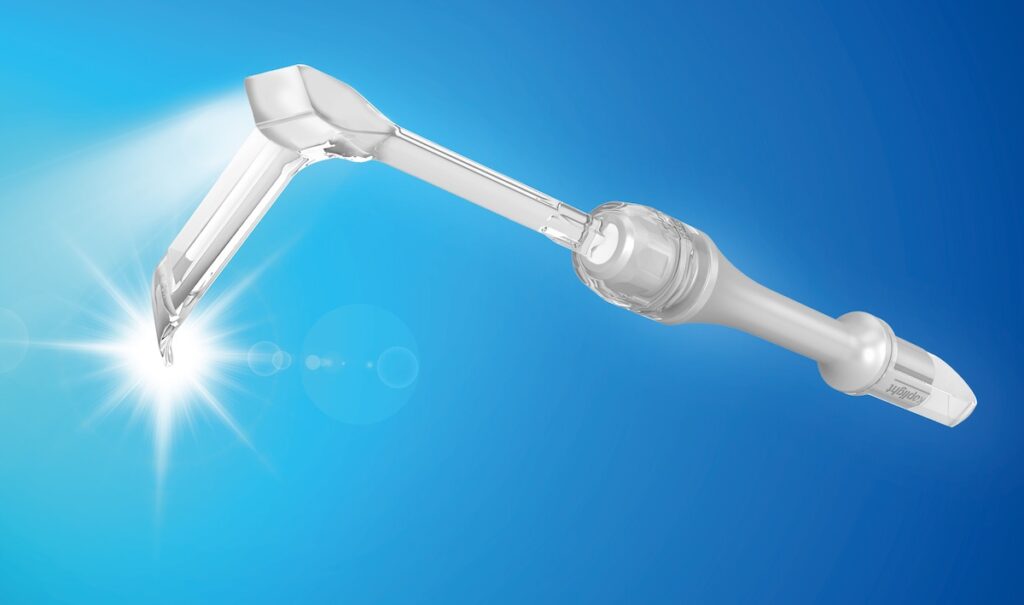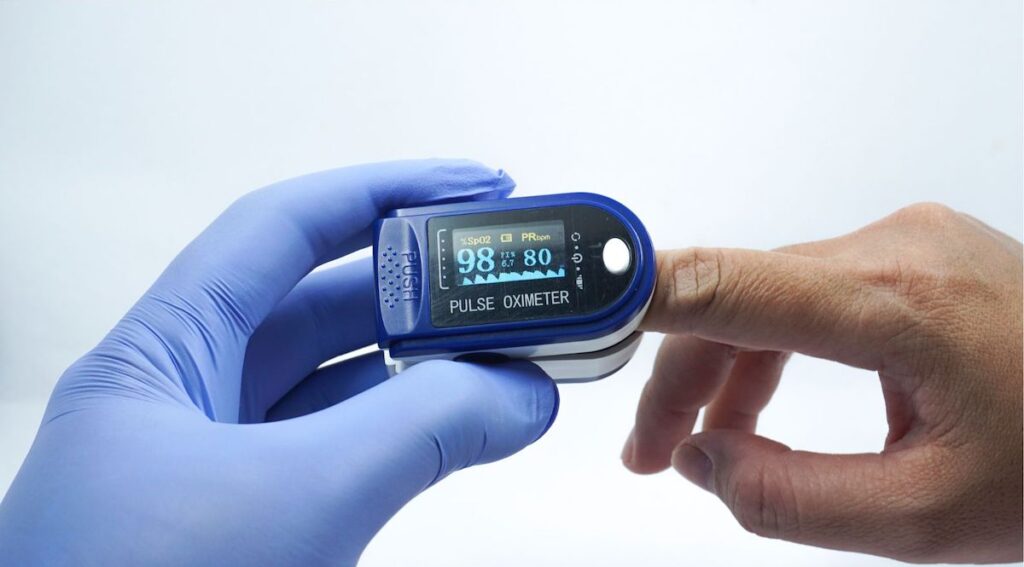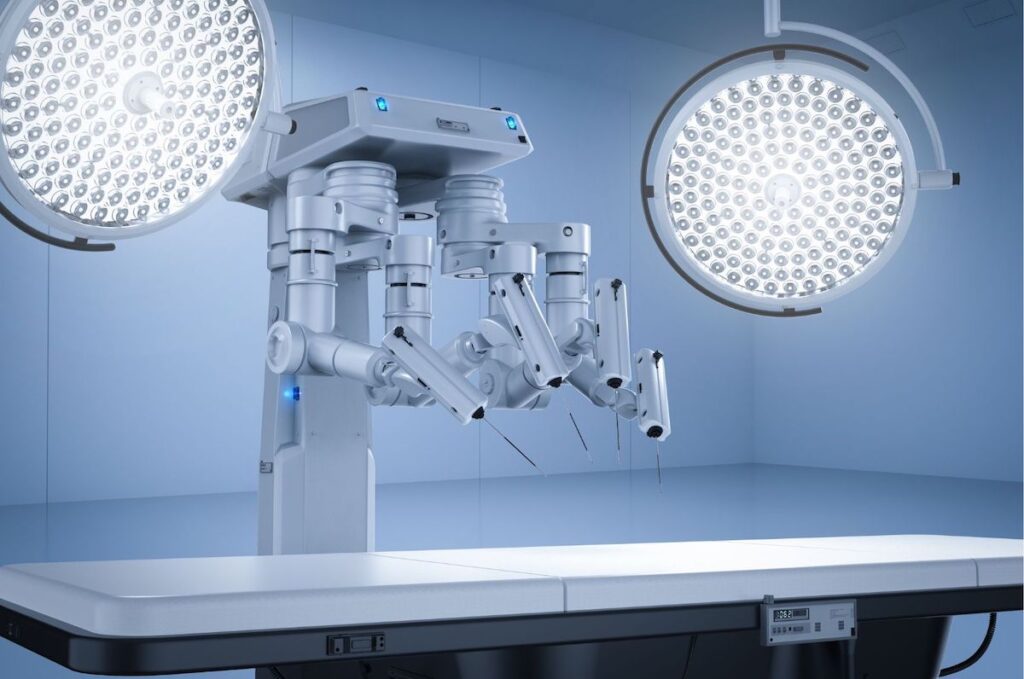Faster postoperative recovery, low-cost production, and a safer environment for patients and surgical personnel are common goals in new medical devices. Above all, safer surgery is always a benefit.
Faster postoperative recovery reduces strain on healthcare systems. Low-cost manufacturing enables less-privileged communities to access lifesaving and life-altering operations. New devices offer greater safety for surgical staff and patients. This prevents unintended accidents.
Here is a collection of nine cutting-edge, relatively recent surgical devices for safer surgery.
1. Computer-assisted surgical systems, robotic surgery
By mapping the necessary regions and optimizing the beneficial outcomes of any procedure, surgical software streamlines processes, reduces the amount of time needed, and aids more conservative operations with smaller incisions. This drives one of the most exciting areas of new medical devices that help with safer surgery.
Computer-assisted surgical systems are a relatively recent addition and have brought a paradigm shift to surgery. Through one or more small ports, these devices assist a surgeon in seeing and carrying out the necessary procedure. Complex systems can create a 3D model of the organ and plan ahead, rather than making a large incision and then investigating.
Robotically assisted surgery, a type of computer-assisted program, has become especially beneficial in gynecology and urology. Typically, the surgeon operates from a console or a cart (bedside or separate). This system offers a variety of device options, including cautery and suction.
Robot- and computer-assisted surgery also results in faster recovery, less scarring, and less tissue damage. These operations may also take place in daycare facilities.
2. Self-lighted surgical retractor
Handheld surgical retractors are manually applied or self-locking to clear the surgeon’s view. Surgical assistants move retractors to widen the field of vision. Traditional retractors can also fatigue the user, obstruct imaging, and have various other shortcomings.
Self-lighted retractors are a relatively recent advancement in surgical equipment. They are either fiber-optic or internally powered by battery, serving as a targeted light source while also doing the job of retracting.
Operational field light is a variable that significantly affects intraoperative and postoperative results. Self-lighted retractors enlighten the body cavity and the surgeon’s field of view. This enhances surgeons’ range of vision. They also lessen the limitations of overhead lighting, including its depth, brightness, and angle.

Self-lit surgical retractors are particularly helpful for deep-body surgeries such as retroperitoneal, deep thoracic, and deep pelvic procedures. They lessen the potential for anastomosis leakage during surgery or afterward. The Yasui koplight, for instance, is a handheld LED-lit retractor useful in a wide range of surgeries, such as oral surgery, breast surgery, thoracic surgery, and brain surgery. And made from durable plastic, rather than steel, they keep a low profile on medical imaging.
3. Surgical skin marker
Surgeons fix or correct problems/anomalies in the body. They plan their course of action like making a roadmap. Before surgery, it’s common to mark the patient’s skin to serve as a surgical site and a means of identification. Skin marker ink has undergone extensive testing on both human and animal test subjects. These studies examined the impact of surgical procedures on physiological function and dye clearance.
The best examples of these dyes are Gentian violet and methylene blue. Permanent markers are also occasionally used.
Skin and tissue marking is a common procedure in several disciplines, including plastic surgery, reconstructive surgery, amputations, and stoma development. Multiple studies found that this preoperative method led to better surgical outcomes and fewer postsurgical problems. They point out the importance of skin markings.
4. One-trocar surgery
Many surgeries have switched from open to laparoscopic or minimally invasive. This promotes faster healing and better cosmetic outcomes.
Trocars are sharp, pointed instruments with a cannula (tube for drainage). They’re used during laparoscopic and minimally invasive surgical procedures. Compared with traditional surgical approaches, these devices leave less scarring and require less recovery time.
This philosophy is taken further by one minor body incision following one trocar-assisted surgery. Because only one device is there to introduce all instruments, it is the best strategy from a cosmetic standpoint.
An example is one-trocar-assisted surgery pyeloplasty for patients with an obstruction in the kidneys’ urine outflow system. The condition is especially prevalent among newborns and young children. This cutting-edge method produces a safer approach for children and less scarring.
5. Shang Ring for circumcision
Male circumcision is a religious and cultural tradition common in many countries. There are many methods for removing the penal foreskin, including traditional surgery and the use of several devices. The Shang Ring is a new and popular circumcision option available in China since 2005. It’s a single-use sterile instrument with two concentric rings that clamp the foreskin and enable removal.
Circumcision is still often a matter of choice for parents of newborns and for adults, but many studies have shown the medical value of male circumcision. It is an efficient way to stop many potentially fatal infections, such as HIV, HPV, and HSV-2. The device can be used on both children and adults.
Studies have found this technology superior to the standard surgical cutting procedure while giving better cosmetic outcomes. It’s also fast, completing the procedure in 5 minutes. The rate of complications following surgery is noticeably lower. The Shang Ring can be used by non-physician medical personnel, making it useful for developing economies.
6. Affordable pulse oximeters
A pulse oximeter is a non-invasive critical care tool that became especially prominent with the advent of COVID-19. To test blood oxygen levels, it is attached to the toes, earlobes, or fingertips. It is a life-saving tool for critically ill or injured patients during their stay in the intensive care unit and under general anesthesia for any invasive treatment.
When the oxygen level falls beyond the required range, these devices sound an alarm, alerting medical staff to respond.

Pulse oximeters come in a variety of sizes. They range from inexpensive, portable models to very sophisticated and expensive, monitor-connected models. An oximeter is a requirement under WHO criteria for safe anesthesia practice, underscoring its importance for surgeons and medical professionals everywhere.
7. Tissue markers
Surgeons must perform operations in deep body cavities, and it can be challenging to distinguish between healthy and pathological tissue. Sometimes there’s no distinct, recognizable border in diseased tissue. These tissues can also be discovered embedded or encapsulated in healthy tissue. These dyes can be injected either before or during surgery. The dyes make it relatively simple to spot abnormal cell clumps.
Colored or radioactive dyes are used as tissue markers. Some examples are Isosulfan blue and indocyanine green. Along with many other illnesses, these indicators are used as an identifying tool for sentinel node biopsy and cancer diagnosis in the lungs and intestines.
This dyed tissue is easily identifiable. A marked distinction of the necessary tissue results in less invasion and less injury when the surrounding tissue is explored. Also, fewer treatments are performed if the offending tissue is correctly identified and removed.
Another form of tissue marker is just as it sounds, an actual marker, or pen. The Yasui Vivomark is one such marker, featuring biocompatible ink. This simple and hygienic product maintains sharp lines on bone and tissue surfaces, even in damp conditions.

8. FCF dye
FCF is the only food color recognized by the FDA for intraoperative marking on human tissue. It is the most recent advancement in tissue markers. It is used in the Coronary Artery Bypass Grafting operation (CABG).
The greater saphenous vein (GSV) is the most frequently used graft in cardiac bypass surgery. It is harvested from the legs. FCF labels the graft in a longitudinal plane. This helps to ensure that the GSV graft’s alignment and direction are understood throughout the procedure.
According to research, mechanical variables, including but not limited to graft twisting, cause 15–25% of early graft failure. Graft orientation is aided by FCF labeling, which also prevents kinking. In CABG, preventing early graft failure results in decreased postoperative graft failure.
Traditional colors have been found to change the physiology of GSV grafts. For surgical operations involving saphenous vein grafts, FCF is comparatively safer.
9. Articulating needle driver
The articulating needle driver is a relatively recent class of laparoscopic surgical instruments. This mechanical device is free of the difficulties associated with robotic and motorized systems. It can replicate movements from the surgeon’s hand to the tool’s tip. It’s also more convenient and affordable than comparable instruments.
The driver is used to insert sutures in deep, difficult-to-reach body planes. There are seven different planes of motion, which make the process simpler. The most frequent use of articulating needle drivers is in laparoscopic hernia repair and other laparoscopic surgeries.
However, extensive training is required to use them, but it can be worth it as this is a time-saving device for a skilled user. Many studies show the results are comparable with conventional needle holders and that suturing time is reduced.
This technology is well suited for less-privileged, underdeveloped surgical institutions worldwide because it doesn’t require a maintenance contract or a substantial budget investment.
—
The Yasui koplight™ cordless illuminated retractor is a self-lighting device that’s affordable, convenient, and can assist in safer and more precise surgery. Contact us for more information if you’re interested in distributing or buying the koplight.

